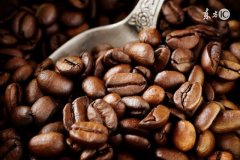How is the planting of single bean in Guatemala? introduction to the award-winning situation of single bean in Guatemala

Professional barista communication, please pay attention to coffee workshop (Weixin Official Accounts cafe_style)
ACATENANGO
Akatango The coffee producing area of this region surrounds the Akatango Valley region, named after the volcano. In the past, many producers sold coffee to "coyotes," through which the fruit was exported to Antigua, where it was processed. This is because Antigua coffee enjoys a better reputation and can be sold at a higher price. This practice is less common now, since the Akatnam specialty coffee produces excellent coffee beans, and the increasingly widespread recognition that coffee beans in the region are not only profitable but traceable.
Altitude: 1,300- 2,000 m
Harvest: December-March
Breeds: Bourbon, Caturra, Catuai
ATITLAN
The coffee farms in Atitlan are situated around Lake Atitlan. Located at an elevation of 1500 meters (4900 feet), the lake has captured the hearts of writers and tourists for years because of its unparalleled beauty. Strong winds are common here in the late morning and early afternoon, and locals call them "xocol," meaning "wind that takes away sin." Here, a number of private nature reserves have been established to protect the biodiversity of the area and help prevent deforestation. Due to rising labor costs and competition for labor, coffee production is under pressure. Urban sprawl has also increased pressure on land use, with some farmers finding it more profitable to sell their land than to continue growing coffee.
COBAN
Before World War II, German coffee producers controlled the area, and Cobain took its name from this period of growth and prosperity. The dense rainforest climate pattern creates a very humid climate, which is a challenge for coffee drying. The area is difficult and expensive to transport due to its location, however, amazing coffee comes from the area.
Altitude: 1,300- 1,500 m
Harvest: December-March
Breeds: Bourbon, Maragogype, Catuai, Caturra, Pache
ANTIGUA
Antigua is probably the best-known coffee-producing region in Guatemala, as well as one of the best-known countries. The area is named "Antigua City" and has famous Spanish architecture and UNESCO World Heritage sites. In 2000, the coffee beans in Antigua received the name of origin as "genuine Antigua coffee" because the market was previously flooded with pirated coffee beans that devalued Antigua coffee beans. However, this has not completely stopped the production of pirated coffee beans from imported fruits and processed locally. Nevertheless, apart from the overpriced counterfeits, there are good quality coffee beans that can be traced back to Antigua and are worth pursuing.
Altitude: 1,500- 1,700 m
Harvest: January-March
Breeds: Bourbon, Catuai, Caturra
Guatemala Guatemala
Population: 15,438,000
Guatemala has been more successful than most in defining its coffee focus areas and developing markets with very different marketing models. In my experience, coffee from this region has a consistent flavor profile, but there is no hard and fast way to specify this.
SAN MARCOS
San Marcos is both the warmest and wettest coffee-growing region in Guatemala. On the slopes facing the Pacific Ocean, the rainy season comes earlier, so flowering is earlier than usual. Rainfall has a large impact on post-harvest drying, so some farms mix sun and mechanical drying. Agriculture is the mainstay of the region's economy, and it also produces food, fruit, meat and wool.
Altitude: 1300--1800m
Harvest: December-March
Breeds: Bourbon, Caturra, Catuai
Important Notice :
前街咖啡 FrontStreet Coffee has moved to new addredd:
FrontStreet Coffee Address: 315,Donghua East Road,GuangZhou
Tel:020 38364473
- Prev

Guatemala Single Bean Estate What Guatemala Single Bean Baking Advice
Professional barista exchanges, please pay attention to coffee workshop (Weixin Official Accounts cafe_style) ATITLAN Coffee Farm is located around Lake Atitland Located at an elevation of 1500 meters (4900 feet), the lake has captured the hearts of writers and tourists for years because of its unparalleled beauty. Strong winds are common here in the late morning and early afternoon,
- Next

How to deal with Guatemala single product beans? how to divide the grades of Guatemala single product beans?
For the exchange of professional baristas, please follow the coffee workshop (Wechat official account cafe_style) SAN MARCOS San Marcos San Marcos is the warmest and wettest coffee growing area in Guatemala. On the hillside facing the Pacific Ocean, the rainy season comes earlier, so the flowering time is earlier than usual. Rainfall has a great effect on post-harvest drying, so some farms mix days at the same time.
Related
- Does Rose Summer choose Blue, Green or Red? Detailed explanation of Rose Summer Coffee plots and Classification in Panamanian Jade Manor
- What is the difference between the origin, producing area, processing plant, cooperative and manor of coffee beans?
- How fine does the espresso powder fit? how to grind the espresso?
- Sca coffee roasting degree color card coffee roasting degree 8 roasting color values what do you mean?
- The practice of lattes: how to make lattes at home
- Introduction to Indonesian Fine Coffee beans-- Java Coffee producing area of Indonesian Arabica Coffee
- How much will the flavor of light and medium roasted rose summer be expressed? What baking level is rose summer suitable for?
- Introduction to the characteristics of washing, sun-drying or wet-planing coffee commonly used in Mantenin, Indonesia
- Price characteristics of Arabica Coffee Bean Starbucks introduction to Manning Coffee Bean Taste producing area Variety Manor
- What is the authentic Yega flavor? What are the flavor characteristics of the really excellent Yejasuffi coffee beans?

